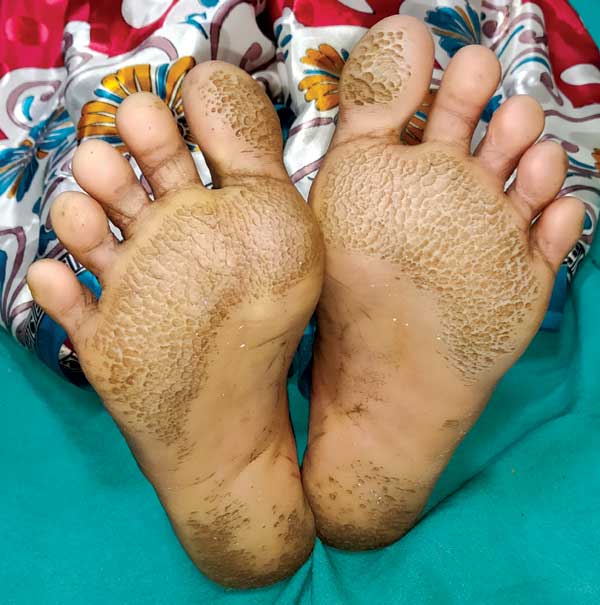|
|
|
Indian Pediatr 2020;57:
875 |
 |
|
|
Abheek Sil*
and Dibyendu Bikash Bhanja
Department
of Dermatology, Venereology, and Leprosy, RG Kar Medical College,
Kolkata, West Bengal, India.
Email: [email protected]
|
|
A 12-year-old girl presented with malodorous pits
over both soles associated with hyperhidrosis for the past three months.
On cutaneous examination, multiple yellowish-brown circular crateriform
pits (2-5 mm) with punched out appearance were seen over the ventral
aspect of the great toe, the ball, and heel of both feet; the pits
coalesced into large, shallow macerated furrows with focal erosion (Fig.
1). A characteristic sparing of the non-pressure bearing areas was
noted. Potassium hydroxide mount of skin scrapings showed no fungal
elements. Based on the characteristic history and cutaneous findings, a
diagnosis of pitted keratolysis was made. She was treated with topical
clindamycin and advised to avoid occlusive footwear; the lesions
resolved in 3 weeks.
 |
|
Fig. 1 Pitted keratolysis
characterized by multiple crateriform pits with punched out
appearance over the pressure-bearing areas of both feet.
|
Pitted keratolysis is a bacterial infection of the
plantar stratum corneum, predominating the weight-bearing areas of the
soles, commonly caused by gram-positive Kytococcus sedentarius.
Although a straight forward diagnosis clinically, differential diagnosis
include plantar warts (absense of skin markings), tinea pedis (erythema,
scaling with fungal elements on KOH mount), and punctate keratoderma
(tiny hard rounded bumps). Topical antibiotics and adequate preventive
measures are recommended.
|
|
|
 |
|

